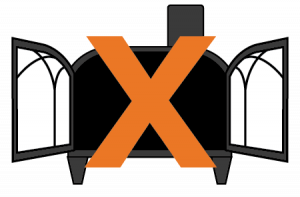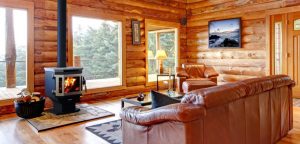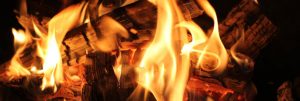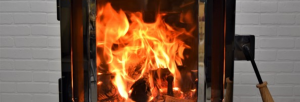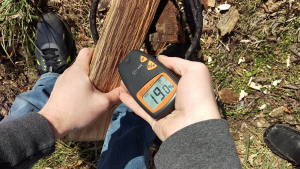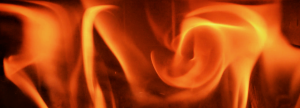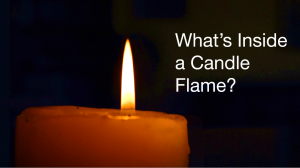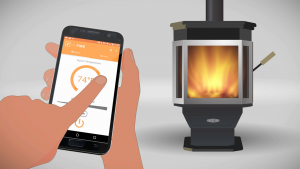Woodstove 101: 8 Tips to Stop Smoke Coming Out of My Woodstove Door
Having trouble with smoke when you open the front door of your woodstove? Nothing is more frustrating than getting smoke in your face when you go to reload your wood burning stove. Unfortunately, smoke always finds the path of least resistance, and in woodstoves, an open door is like… well an open door. Fortunately, there are a few steps you can take to minimize how much smoke comes out of your woodstove door.
How to Stop Smoke Coming Out of a Woodstove When The Door is Open
1. Make sure your catalytic combustor bypass or combustion fan is engaged: If your woodstove is equipped with a catalytic combustor (and most clean wood stoves are) you should bypass the catalytic combustor before opening the door. This helps direct the flow up and out of your chimney instead of out the door.
2. Clean your catalytic combustor: It’s easy to forget this bit of maintenance for woodstoves with a catalytic combustor. It isn’t hard for the combustor to get clogged. Your catalytic combustor is usually found at the top and back of your stove. If you observe ash accumulated on the firebox side of your combustor, simply gently brush off the ash with a soft brush, or vacuum off the ash with a soft brush attachment. Sometimes, removing the catalytic combustor from the woodstove for a thorough cleaning is required to stop smoke coming out of the door.
Stop fussing with your old, hard-to-use woodstove. Shop MF Fire today!
3. Don’t reload when there are flames: No smoke can come out of your wood burning stove if there is limited smoke inside your woodstove! When first loading the wood there are open flames and a large amount of smoke inside your woodstove. But as the fire burns on and reduces down to coals, far less smoke exists. Try to limit opening the door to when the fire is not open flaming and is only coals to stop smoke coming out of the stove when the door is open.
4. Try to use seasoned, non-resinous hard woods: Wet or oily wood produces much more smoke in wood burning stoves than seasoned hardwoods. Sticking to seasoned hard woods helps minimize the smoke produced, and is good for efficient burning too. In some regions, hardwoods are not necessarily available and you should make sure your firewood is seasoned well.
5. Load towards the back of the stove: When reloading woodstoves, you should rake the coals towards the front and load your wood towards the back. Wood loaded in the back of the stove is more likely to stop smoke coming out of the wood burning stove when the door is open.
Check out our beautiful, modern, and easy to use wood stoves!
6. Crack the door before opening: When you first crack the door of your stove, the airflow inside your stove changes. Before opening the door completely, slightly crack the door and wait 10 to 20 seconds for the new airflow pattern to establish. Then open the door slowly.
7. Turn off all fans near the stove: Your woodstove’s blower fan, kitchen fans, and even bathroom fans can create partial vacuums that suck smoke out of your stove’s open door. By turning off these devices, it is easier for smoke to stay where it belongs – inside your stove.
8. Check your flue pipe: If all else fails, the problem may be a draft problem. Your woodstove relies on suction, called draft or draught, from the chimney to draw the smoke up the woodstove chimney. There are a few items that can cause bad draft in wood burning stoves: a cold chimney, wind induced down draft, or even a clogged or obstructed chimney. If you’re still unable to stop smoke coming out of the stove door, even after trying all of the above tips, call a certified chimney sweep or wood stove installer to come and inspect your stove.
Smoky wood burning stoves can be frustrating, but by changing just a few details about how you operate your wood stove, you can stop smoke coming out of a stove when the door is open easily.
